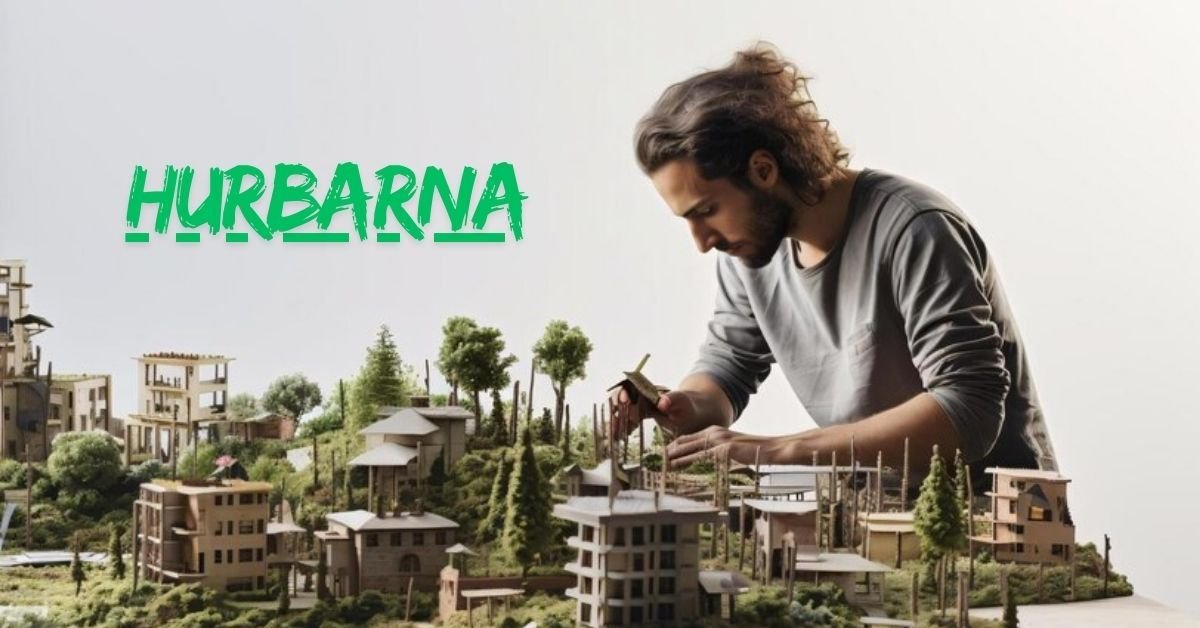
The thinking brought out by “hurbarna” redefines the possible ways of living in a city. However, as much as hurbarna will redesign our cities, what it is, is not well defined. Alright, this is quite an interesting topic; now let’s dig into it and discuss possible evolution of urban environment.
What is Hurbarna?
It has a meaning based on combination of two words, ‘urban’ and ‘harmony’, which might refer to a contemporary move to challenging lifestyle of people and setting up new balanced and sustainable city life. To put it in simple terms, it’s about making everyone’s existence co-exist in harmonious and sustainable surroundings; living, interacting and playing at work. In that sense, it might be looked at as the evolution of urban planning, with the intention of integrating such things as technology solutions, nature, and a sense of community.
The Principles of Hurbarna
1. Sustainability at the Core:
Special emphasis is made in the area of sustainability, at Hurbarna. This means using environmental resources efficiently and sparingly, reducing environmental pollution and dumping and encouraging the development of renewable power resources. Envision a world where cities are standard by solar panels, waste as discarded with hardly any being dumped into a dump sites, and greenery is as common as buildings.
2. Smart Technology Integration:
Hurbarna cannot be complete without smart cities as they are an important aspect of this concept. These cities use technology advancement in enhancing the standards of living of their populations. Whereas, traffic signal that are intelligent, protective herider wearables, and apps for air quality are among the technologies common in hurbarna cities as they aim to solve the challenges of our daily lives.
3. Community Focused Design:
Perhaps, the most essential requirement within hurbarna is in establishing community. This is where you have to create neighbourhoods where there is a focus on making sure that the dwellings are producing places where people interact, shopping centers, local markets, and other social amenities such as community halls. Try to imagine a situation where one really knows everyone around or at least those who live nearby and has a feeling of togetherness.
4. Green and Open Spaces:
Towers are not decoratives in hurbarna as they give a sense of belonging especially through the greens. They are natural elements of the urban environment and include green areas as parks, gardens on roofs of buildings, urban forests and so on, that can serve as demand fulfilling for recreation and leisure, as well as clean the air.
Benefits of Hurbarna Living
Enhanced Quality of Life:
Is living in a hurbarna city beneficial? Yes, because it is associated with a better quality of life. Has aspects from clean air, open and lush areas to intelligent commuter and traffic facilities for a better and more positive quality of life.
Economic Opportunities:
Hurbarna cities are designed as nontraditional creative and innovative uptown centers. Through the development of infrastructure and provision of services that incorporate sustainability and technology, they generate employment and economic growth as they lure investors and talented personnel.
Environmental Impact:
One of the major strengths of hurbarna cities is that in their approach to renewable energy and waste management, specifically the latter, embodies environmentally sustainable strategies. Such actions not only benefit the future of this planet but also provide a benchmark for other cities to emulate.
Examples of Hurbarna in Action
Masdar City, UAE:
An excellent example of a hurbarna city of today could be the Masdar City in the United Arab Emirates. This city has the potential of being one of the greenest cities globally with major interest on renewable power sources as well as environmentally friendly architecture and construction.
Songdo, South Korea:
Songdo International Business District located in South Korea is the other instance. Designed from the ground up as a ‘smart’ city, Songdo incorporated technology into its fabric with smart structures, with regard to waste management and green spaces.
Copenhagen, Denmark:
Renowned as one of the greenest capitals globally Copenhagen embraces sustainability by doing more with less. Perhaps the best example of hurbarna principles Eco City is filled with bike paths using renewable resources and highly motivated to cut carbon emission.
Challenges in Implementing Hurbarna
High Initial Costs:
Currently, hurbarna appears to have a number of challenges one of which is the cost of constructing or transforming city structures to meet standards. But the mentioned costs can be impressively reverted by the long-term utilities in the sphere of energy and healthcare.
Technological Barriers:
Despite these key principles of hurbarna remaining wholly technology-oriented, there are a number of barriers restricting the use of technology fully. The present challenges that are seen in the need to advance Information technology include the following.
Social and Cultural Resistance:
The use of architecture to influence shift in the way people live and their relationship with built structures may be countered. I also identified educating the public and proving the importance and value of hurbarna living as critical strategies for acceptance and success.

The Role of Governments and Policies
The fact that hurbarna cities are still at infancy, and the key role played by Governments in their development. These include policies for exhibiting sustainable power, extending rewards to green construction, and adopting smart innovation.
Incentives for Green Building:
Government incentives that include tax exemptions or subsidies that promote environmentally friendly buildings can prompt the developers to pursue sustainable projects.
Investment in Public Transport:
Public transportation is a fundamental pillar of hurbarna since a good network and a well-functioning public transport system can reduce travel time and improve options. It similarly remains the responsibility of governments to ensure that effective public transport systems, for instance, are established to discourage people from using cars and thus lowering pollution.
Education and Awareness Programs:
Even so, awareness on the advantages of decentralized hurbarna living and the ways by which the community could help is essential. It can be further effected through initiatives as the community programs, schools, and media.
How Can Individuals Contribute to Hurbarna?
Adopting Sustainable Practices:
The public can participate through changing their behaviors and their habits; recycling materials and using energy efficient products, services, and supporting locally-owned and organic food products.
Engaging with Community Initiatives:
The organization of inviting people to take part in such activities as clean-up exercises, tree planting, or development of green areas like community gardens, to help foster the goals and themes of hurbarna.
Advocating for Change:
Just like in other areas, being an advocate for hurbarna principles in one’s locality will also be significant. This may mean advocating at the local level by contacting local authorities, attending city planning sessions and other similar forums or raising awareness of sustainability in the community.
The Future of Hurbarna
Technological Advancements:
Taking into account growth in technologies, there will be more opportunities for hurbarna cities in the future. Energy management systems that use AI technology, as well as intelligent public transportation systems that manage themselves, will be the future.
Global Collaboration:
Global collaboration is key. This makes hurbarna cities’ collaboration possible and it will be possible for cities around the world to share their practices and reach out to other cities to be like them to form a network of hurbarna cities.
Adapting to climate change:
Hurbarna towns are properly ready to evolve to the challenges posed by way of climate change. With their focus on sustainability and resilience they can better withstand environmental shocks and stresses.
Conclusion:
Hurbarna or ‘urban bazaar’ is a concept that sculpts out a dream for the future urban life styles that is tremendously sustainable, Smart and always into thinking about ‘The community’. Green spaces play an important role in hurbarna cities’ design to create more comfortable spaces for people and improve the environment using technology Concept of hurbarna cities also reflects significance of social interactions to the population’s quality of life and tackles the current environmental issues.
Towards such a world, hurbarna is a guidance on how to construct better cities, or to borrow from Peter Hall’s words, sustainable and resilient urban worlds. Today the process of urbanization is underway and people have a unique opportunity to see the development of new cities and settlements from the inside, with hurbarna in the lead.
FAQs
1. What does hurbarna mean?
Vietnamese design is exemplified by a new word, Hurbarna, which is derived from urban and harmony that closely associate with a new lifestyle of sustainable and smart city.
2. How do hurbarna cities benefit the environment?
Culturally/Hurbarna cities focus on conservation and proper usage of energy, water and other resources where their impact on environment is drastically reduced.
3. What are some examples of hurbarna cities?
Examples include: Masdar City in the UAE where the city has been planned with sustainability and technology in mind as is Songdo in South Korea and Copenhagen in Denmark.
4. What challenges do hurbarna cities face?
There are some difficult issues: its costs are rather high at the beginning, there can be some difficulties connected with the use of technologies and social resistance. Yet, all of these can be solved, at least in part, through policies, awareness, and technological progress.
5. How can individuals support the development of hurbarna cities?
Members of society can also change their personal behaviors and support community-oriented activities that would entail the principles of a sustainable hurbarna community.






